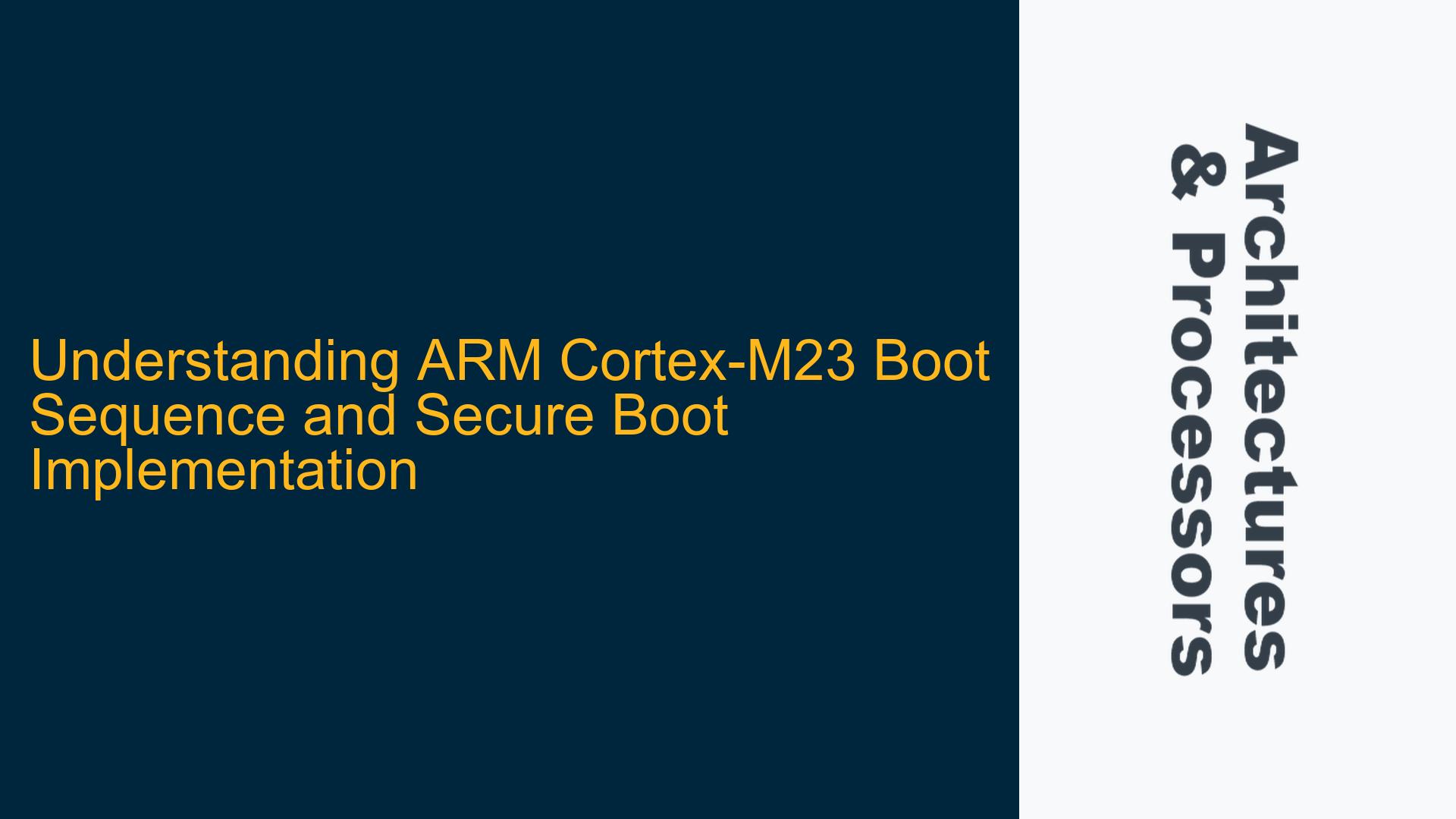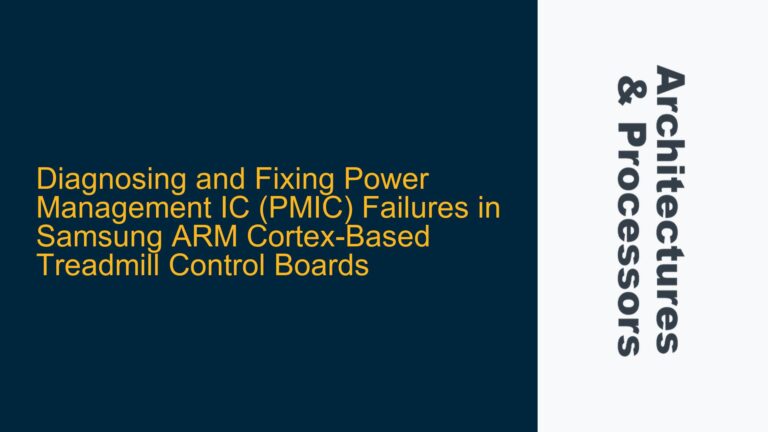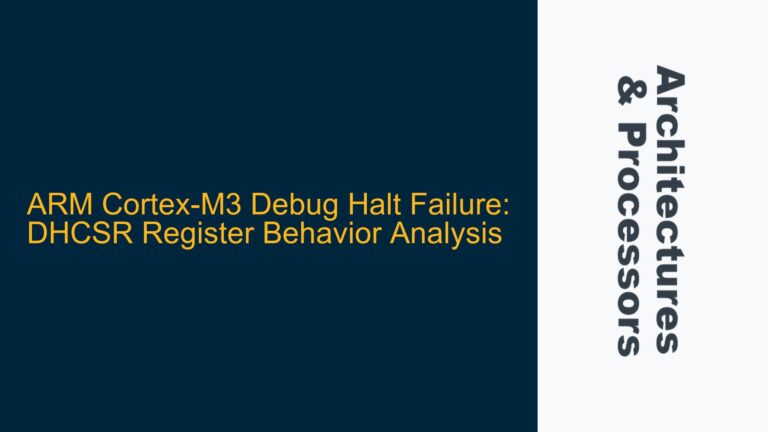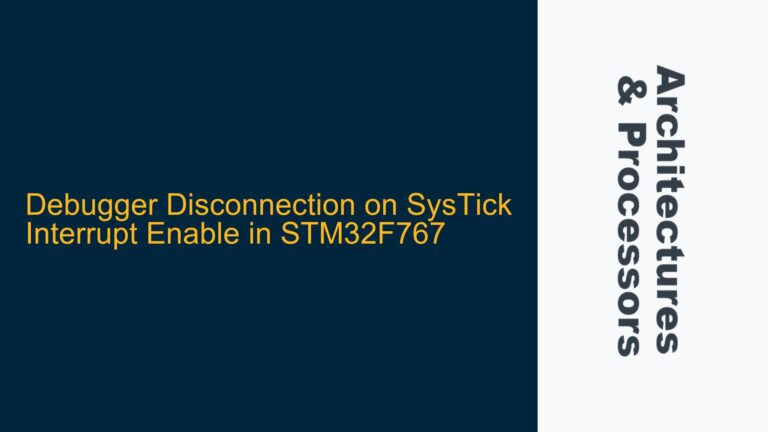Boot ROM and Bootloader Roles in ARM Cortex-M23 Secure Boot
The ARM Cortex-M23 processor, as used in the SAM L11 microcontroller, implements a secure boot process that involves two primary components: the Boot ROM and the software bootloader. The Boot ROM is a read-only memory region that contains the first-stage boot code, which is executed immediately after the processor exits reset. This Boot ROM is responsible for initializing the system, checking the integrity of the bootloader, and ensuring that the bootloader has not been tampered with. The bootloader, on the other hand, is stored in a separate region of memory, typically referred to as the BOOT region, which is divided into secure (B_S) and non-secure (B_NS) sections. The bootloader is responsible for loading and authenticating the user application code, as well as handling firmware updates.
The Boot ROM performs a critical role in the secure boot process by verifying the integrity of the bootloader before allowing it to execute. This verification is typically done using cryptographic techniques, such as digital signatures or hash-based message authentication codes (HMACs), to ensure that the bootloader has not been altered. Once the Boot ROM has verified the bootloader, it transfers control to the bootloader, which then takes over the boot process. The bootloader, in turn, is responsible for verifying the integrity of the user application code before executing it. This two-stage boot process ensures that only trusted code is executed on the system, thereby providing a strong foundation for system security.
Bootloader Execution and Firmware Update Responsibilities
One of the key points of confusion in the boot sequence is whether the bootloader is executed during the initial boot process or if it is solely responsible for firmware updates. The bootloader is indeed executed during the initial boot process, but its role extends beyond just firmware updates. After the Boot ROM has verified the bootloader, the bootloader is responsible for loading and authenticating the user application code. This involves checking the integrity of the application code, typically using cryptographic techniques similar to those used by the Boot ROM to verify the bootloader. Once the application code has been verified, the bootloader transfers control to the application, which then begins execution.
In addition to its role in the boot process, the bootloader is also responsible for handling firmware updates. This involves receiving new firmware images, verifying their integrity, and then writing them to the appropriate memory regions. The bootloader must ensure that the new firmware is authentic and has not been tampered with before allowing it to be installed. This is typically done using digital signatures or other cryptographic techniques to verify the authenticity of the firmware image. Once the new firmware has been verified, the bootloader writes it to the appropriate memory region and then reboots the system to begin executing the new firmware.
Ensuring Secure Boot and User Code Authentication
The secure boot process on the ARM Cortex-M23 is designed to ensure that only trusted code is executed on the system. This is achieved through a combination of cryptographic techniques and hardware-based security features. The Boot ROM is responsible for verifying the integrity of the bootloader, while the bootloader is responsible for verifying the integrity of the user application code. This two-stage verification process ensures that only code that has been authenticated by the Boot ROM and the bootloader is executed on the system.
To ensure that user code is authenticated during the boot process, the bootloader must implement a secure mechanism for verifying the integrity of the application code. This typically involves using cryptographic techniques, such as digital signatures or HMACs, to verify that the application code has not been tampered with. The bootloader must also ensure that the application code is loaded from a trusted source, such as a secure memory region or a trusted external storage device. Once the application code has been verified, the bootloader transfers control to the application, which then begins execution.
In addition to verifying the integrity of the application code, the bootloader must also ensure that the system is in a secure state before transferring control to the application. This involves configuring the system’s security features, such as the Memory Protection Unit (MPU) and the TrustZone for ARMv8-M, to ensure that the application code cannot access sensitive resources or modify critical system settings. The bootloader must also ensure that any sensitive data, such as cryptographic keys or configuration settings, is properly protected before transferring control to the application.
Implementing Secure Boot on ARM Cortex-M23
Implementing a secure boot process on the ARM Cortex-M23 involves several key steps. First, the Boot ROM must be configured to verify the integrity of the bootloader. This typically involves using cryptographic techniques, such as digital signatures or HMACs, to ensure that the bootloader has not been tampered with. The Boot ROM must also be configured to transfer control to the bootloader once the bootloader has been verified.
Next, the bootloader must be implemented to verify the integrity of the user application code. This involves using cryptographic techniques to verify that the application code has not been tampered with and ensuring that the application code is loaded from a trusted source. The bootloader must also configure the system’s security features, such as the MPU and TrustZone for ARMv8-M, to ensure that the application code cannot access sensitive resources or modify critical system settings.
Finally, the bootloader must be implemented to handle firmware updates. This involves receiving new firmware images, verifying their integrity, and writing them to the appropriate memory regions. The bootloader must ensure that the new firmware is authentic and has not been tampered with before allowing it to be installed. Once the new firmware has been verified, the bootloader writes it to the appropriate memory region and then reboots the system to begin executing the new firmware.
Troubleshooting Common Issues in ARM Cortex-M23 Secure Boot
When implementing a secure boot process on the ARM Cortex-M23, several common issues can arise. One of the most common issues is the failure of the Boot ROM to verify the bootloader. This can occur if the bootloader has been tampered with or if the cryptographic keys used to verify the bootloader have been compromised. To troubleshoot this issue, it is important to verify that the bootloader has not been altered and that the cryptographic keys used to verify the bootloader are correct.
Another common issue is the failure of the bootloader to verify the user application code. This can occur if the application code has been tampered with or if the cryptographic keys used to verify the application code have been compromised. To troubleshoot this issue, it is important to verify that the application code has not been altered and that the cryptographic keys used to verify the application code are correct.
Finally, issues can arise when handling firmware updates. This can occur if the new firmware image is not authentic or if the cryptographic keys used to verify the firmware image have been compromised. To troubleshoot this issue, it is important to verify that the new firmware image is authentic and that the cryptographic keys used to verify the firmware image are correct.
Best Practices for Secure Boot Implementation on ARM Cortex-M23
To ensure a successful secure boot implementation on the ARM Cortex-M23, it is important to follow best practices. First, it is important to use strong cryptographic techniques to verify the integrity of the bootloader and the user application code. This typically involves using digital signatures or HMACs to ensure that the code has not been tampered with. It is also important to use secure cryptographic keys and to protect these keys from unauthorized access.
Second, it is important to configure the system’s security features, such as the MPU and TrustZone for ARMv8-M, to ensure that the application code cannot access sensitive resources or modify critical system settings. This involves setting up appropriate memory protection regions and configuring the TrustZone to isolate sensitive resources from the application code.
Finally, it is important to implement a secure mechanism for handling firmware updates. This involves using cryptographic techniques to verify the integrity of the new firmware image and ensuring that the new firmware is loaded from a trusted source. It is also important to protect the cryptographic keys used to verify the firmware image and to ensure that the new firmware is written to the appropriate memory region before rebooting the system.
By following these best practices, you can ensure a secure boot implementation on the ARM Cortex-M23 that protects the system from unauthorized access and ensures that only trusted code is executed.






